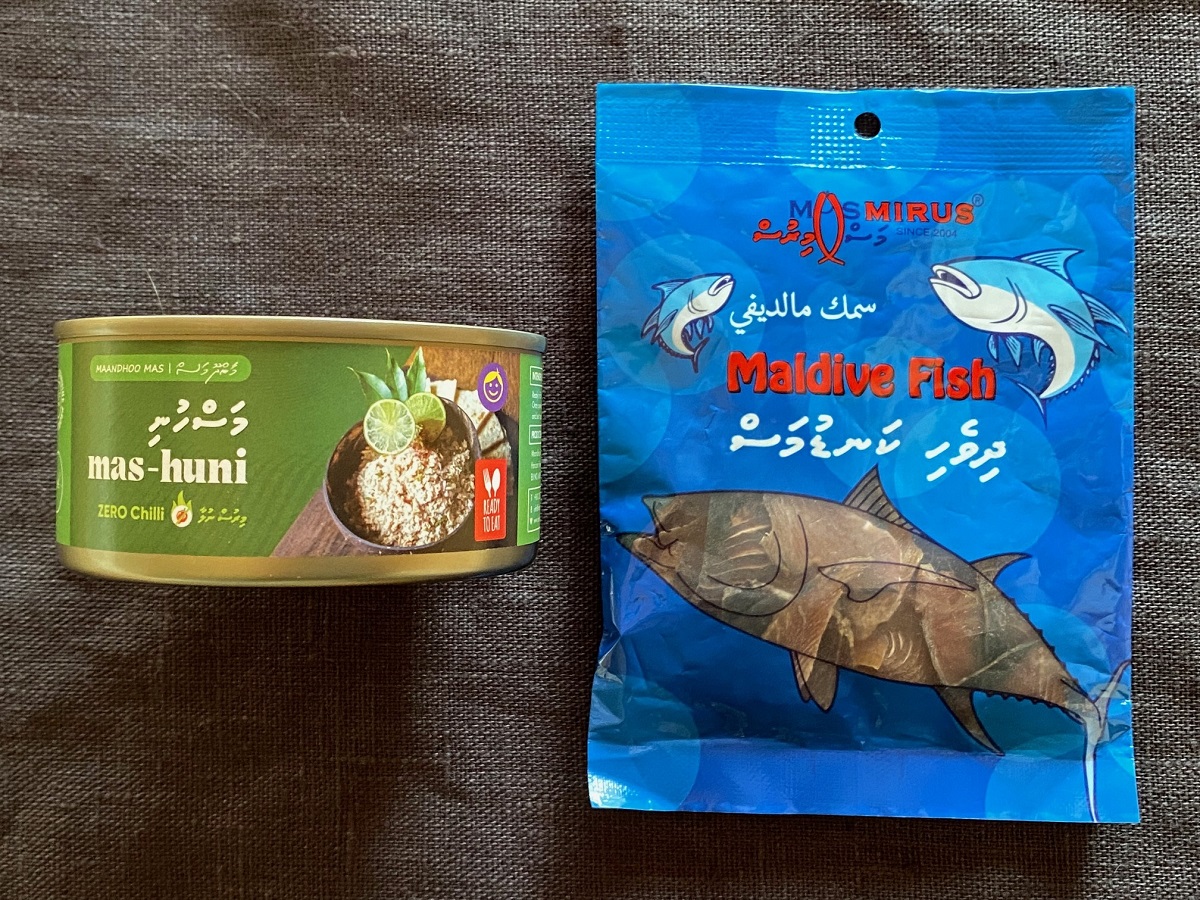On February 21, people from the Maldives visited us as part of JICA’s “Capacity Building for Supporting Fishing Communities” training program.
There were a total of 11 people: 4 Maldivians, male and female, and 3 Japanese including an interpreter.
Since their one-day visit to Japan on February 12, they had made the long trip from Kagawa to Ehime and then to Kochi, but everyone was cheerful and full of energy. (Maybe it was the bonito they were eating!).
I wondered why our company was the training site in the first place, but it was the Soda-bushi smoked crisp that started it all.
It seems that it was one of the most popular skipjack-related products that JICA officials bought for training materials when they went to the Maldives, and they requested to visit us.
When I was asked about this project, I was writing about bonito flakes in the Maldives on the Soda Bushi blog, so I felt a connection with them.
So, on the day of the tour, we will be serving a company secret! We planned to demonstrate the production of Soda-bushi smoked crisp on the day of the event.
I talked about the history of our company, which started out making dried bonito flakes, switched to Soda-bushi production, and is now focusing on product development.

In fact, bonito from the Maldives and medica from Tosashimizu have a lot in common, although the species of fish are different.
They are caught by one-day fishing, they are not eaten raw locally, and they are still developing as a retail product, so you could say they are closer than the highly commercialized Japanese dried bonito industry.
I don’t think that was the reason, but everyone was very enthusiastic and asked many questions. Many people wanted to try their hands at actually picking up the crisps, not only about their production, but also about the background to their development and the process of packing and sealing them.


The finished dozen or so Soda-bushi smoked Yuzu Shio-flavored crisps were given to a woman who had been given the nickname “Dokuremon.
During a recent visit to Nakatosa Town, which was on the local news, the dialect of “Dokuremon = weirdo” became a topic of conversation, so we decided to give it to her! So, it seems that the local news was talking about “Dokuremon = weirdo.
But she was not just a weirdo, and her Japanese, which she spoke at the end as a thank-you for the training, had a wonderful pronunciation that was easy to understand.

We also received a souvenir from the Maldives, which was sliced bonito that was between the consistency of raw flakes and dried bonito flakes, and seasoned with spices.
We also received a dish called “Rihaakul,” which is the same as the bonito broth (katsuo no irori) that I have previously blogged about, but boiled down in a broth.

It was my first time to try both of them, but as I am not a fan of spices, the Rihaakulu was more palatable to my taste buds.
It seems that each island in the Maldives has its own characteristics and preferences when it comes to rehakul, and I thought it was the same with our regional peers.
It seems that there are still few designed products, and they are sometimes sold directly packed in empty coffee or jam jars.
I explained that commercialization and mechanization are paths we have taken since we started product development about 20 years ago, and I hoped that I could convey that experience.
Although many of the Maldivians were government officials, there were also designers and fishery processors, and most importantly, everyone was young and very enthusiastic, so I was sure that they would come up with good products.

When I told them that I would like to surf in the Maldives someday, one of them told me to contact them when I do.
Thank you for the opportunity to have such a wonderful and enjoyable exchange, where we were supposed to be teaching, but before we knew it, we were learning.
I would like to learn at least simple English conversation for another opportunity.
Translated with DeepL.com (free version)


Comments